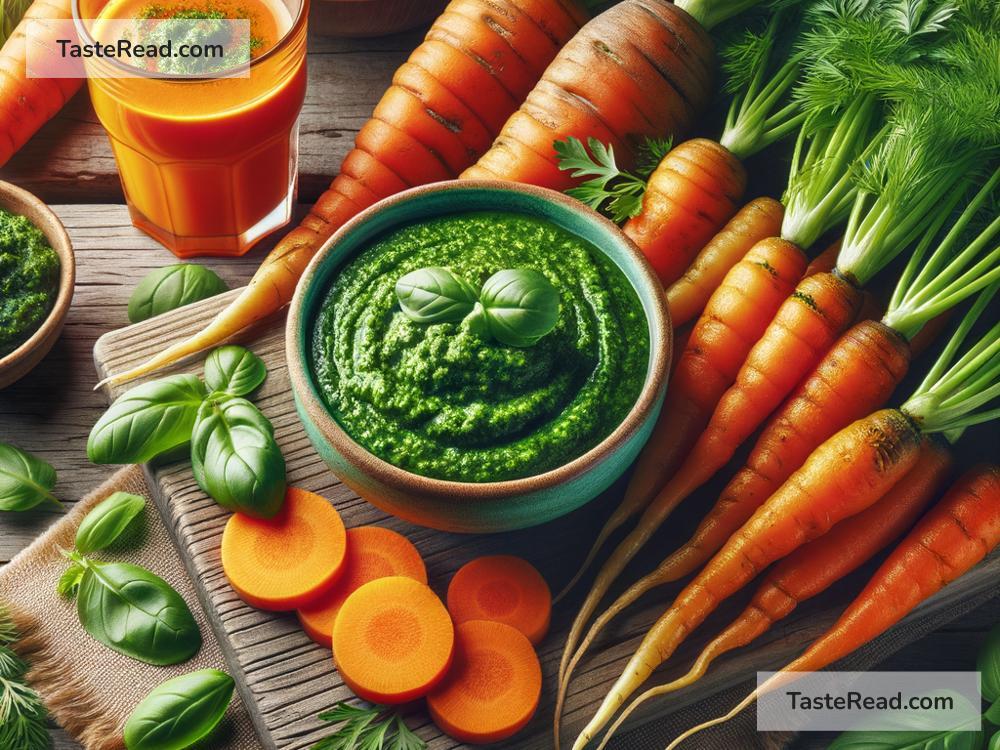Cooking with All Parts of the Carrot Plant: A Guide to Zero Waste in the Kitchen
Carrots are one of those versatile vegetables that most of us have in our kitchens. We grate them into salads, chop them into soups, and snack on them as is. But when we prepare carrots, we often peel them and chop off the tops, discarding parts of the carrot that are not only edible but delicious and nutritious. The reality is, we can use every part of the carrot plant – roots, stems, and greens – to create amazing dishes. Here’s how you can make the most out of your carrots, embracing a zero waste approach in your kitchen.
Root to Stem: Cooking with Carrot Roots
The root is the part of the carrot we are all familiar with – it’s crunchy, sweet, and full of nutrients like beta-carotene, fiber, vitamin K1, potassium, and antioxidants. Cooking with carrot roots can go beyond just chopping and snacking. Have you tried carrot fries? Simply slice your carrots, toss them in a bit of olive oil and your favorite seasonings, and roast in the oven for a sweet, healthy treat.
Don’t forget that carrot peels are edible too! Save those peels when you’re prepping carrots and toss them with a bit of oil and seasoning. Roast them until crispy for a delicious, crunchy snack or salad topping. This way, no part of the carrot is wasted.
Stalks and Leaves: The Underrated Greens
Many people don’t realize that carrot greens are edible. In fact, they have a slightly bitter taste that can add a unique flavor to various dishes. Here are a couple of ways to use them:
-
Pesto: Substitute basil with carrot tops in your pesto recipe for a fresh take on the classic sauce. Carrot tops, parmesan, garlic, nuts, and olive oil blended together make for a tasty and nutritious pesto that goes great with pasta, sandwiches, or as a dip.
-
Salads: Fresh carrot greens can also be chopped and added to salads. They give a nice, herby punch that elevates simple greens. Just make sure to wash them well and remove the tough stems.
Don’t Toss Those Stems
While the stems of carrot greens can be a bit tough, they shouldn’t be thrown away. They can be used to make delicious vegetable stock. Simply save them in the freezer (along with other veggie scraps like onion-peels, celery ends, and anything else suitable for stock) until you have enough to make a pot of homemade vegetable stock. It’s a great way to add flavor to soups, risottos, and more.
Whole Carrot Recipes
Embracing the whole carrot concept is not only eco-friendly and economical but also opens up a world of culinary creativity. Here are a couple of recipes that utilize the entire carrot:
-
Carrot “Bacon”: Believe it or not, you can make a tasty, vegetarian substitute for bacon with carrots. Slice the carrot thinly, marinate it in a mix of soy sauce, maple syrup, smoked paprika, and garlic powder, then bake until crispy. It’s delicious in BLTs, salads, or as a snack.
-
Carrot Greens Chimichurri: Use carrot tops instead of parsley in a chimichurri recipe for a tangy sauce that’s perfect on grilled vegetables or meats.
By adopting this approach, we take a small, but significant step towards reducing food waste. It’s about seeing the value in what we usually discard and discovering new and exciting ways to enjoy every bit of our food. Whether you’re a seasoned chef or just starting in the kitchen, cooking with all parts of the carrot plant is an easy and impactful way to make your cooking routine more sustainable. Not to mention, it’s a fun challenge that can inspire creativity and introduce you to new flavors. So next time you find yourself about to throw away those carrot tops, think again. Happy cooking!
Remember, the journey towards a zero-waste lifestyle doesn’t happen overnight. It’s about making small changes and choices that collectively make a big difference. Cooking with all parts of the carrot is just one simple way you can contribute to a more sustainable world, one meal at a time.


